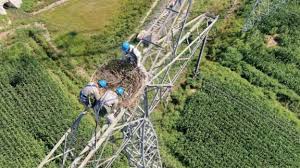The south of France is overrated – head to the north this summer

Anna Richards
Paris: If you want to be a cliché, head to the south of France in peak season, cook yourself like an overdone steak, and then wonder why the French call you “rosbif”.
I love the south of France…in spring, autumn, winter, or even early summer. But Cassis in August? No thanks. I’ve no interest in paying €50 a day for a parking spot, or wrestling half of London for a sun lounger at the crack of dawn to protect my freckled, British skin from the searing heat. Many recent years have seen temperatures rise to over 40C in south and central France – forget roast beef, those temperatures would turn my skin to biltong.
The solution? The north. There’s nothing grim about it, unless of course lower prices, fewer crowds and breathable temperatures aren’t your thing.
We’d always holiday in northern France when I was a child. Not because my Cornish family was ahead of the trend, but because they believed so wholeheartedly that Cornwall was the best place in the world, they looked to replicate when we went away. That meant that each summer we’d head to what I always referred to as “French Cornwall”, more commonly known as Brittany. Sometimes we’d go at Easter too, and if we were feeling really adventurous, we might even dip into Normandy.
Our trips weren’t luxurious. Usually we’d pitch up at a Eurocamp site, and my parents would send me off to play badminton, ping pong or boules with whichever long-suffering French family would have me. If we went to a gîte it would have been chosen for “character”, like the Normandy farmhouse where wood-boring beetles chewing the old beams kept me awake night after night, leading me to fashion noise-cancelling headphones from a sports sweatband and several pairs of socks.

We didn’t burn our skin, but the weather had other ways to test us. On one camping trip in Carnac, Brittany, it rained solidly for two weeks. My parents would have happily given up and gone home, returning to a no doubt equally rainy Cornwall, but we’d booked a week off in term time (back in the days when this wasn’t considered a serious offence), and I didn’t want to budge. Who wouldn’t choose a rainy camping trip over maths lessons?
It’s ironic that this inclement weather is fast becoming northern France’s best asset. As the south dries out like a prune year on year, northern France’s “flaw” is having the same renaissance as Aimee Lou Wood’s teeth.
Now that the leather-skin look is out of fashion and slathering ourselves in SPF 50+ is in, scorching temperatures are obsolete. Surely no-one actually enjoys baking in 40C heat. I’d rather go somewhere more temperate so that I can hike, bike and most importantly, eat myself silly without the heat curbing my appetite. Most of all, I don’t want to be squished onto a beach that feels like the Northern Line at rush hour, no matter how much Vitamin D I’m soaking up.
My mum used to travel with the kitchen sink, something we’d never have been able to do if we were flying to the south of France. She’d stuff the car boot with a hotel buffet selection of breakfast cereals and the entire medicine cupboard, and while I’d never support swapping your croissant for a box of cornflakes you brought from home, I’ve begun to see the merits of ferry-enabled overpacking.
I’ve crossed the Channel several times with a paddleboard, camping gear and bicycle, a great way of cutting costs and giving me extra freedom. From the seclusion of a SUP, you can visit the most over-touristed places in the north, like Mont-Saint-Michel or the cliffs of Étretat, and feel as though you got prime seats in the quiet carriage. You can also bring 18 litres of wine back with you — take that Ryanair.
I won’t argue with beefsteak tomatoes, olives and oranges plucked straight from the tree in the south, but there’s something immensely comforting about northern food. A hill I’ll die on: salted butter is France’s greatest contribution to gastronomy. In Brittany, everything is sozzled in the stuff. Galettes, razor clams, kouign-amann (a pastry so buttery it makes croissants taste beige), even ice cream, all encrusted with jewels of sea salt.
The cheese is extra indulgent too. All the creamy ones are from Normandy: brie, camembert, neufchâtel. As well as not barbecuing our skin for a tan, the other thing we’re not doing in 2025 is dieting, so if I want to sit on an overcast beach and devour an entire camembert and a baguette, I bloody well will. The places in France currently creating a buzz around food aren’t Provence, or Bordeaux, or even Lyon. They’re up north. Nantes is France’s foodie capital for 2025, and Rouen, Normandy is the first and only French city to have been named a City of Gastronomy by Unesco.
The human brain craves variety, and as the south dries out into a uniform arid brown of vine stems and sandy earth by the end of the summer, the north is well-watered. Fields of artichokes are still green and purple. The cliffs are still covered with buttery gorse flowers. There are heaps of flowers – just hike along Brittany’s pink granite coast for rainbow-coloured views.
Skipping school to sit in a rainy tent is no longer my pinnacle of success – I’m not nine years old any more – but northern France’s accommodation has grown up with me. Saint-Malo is fast becoming as fancy as Antibes. Who cares about drizzle if you’re watching the rain fall from the window of a pimped-up lighthouse or château?
Formerly an 18th-century hospital, now a four-star hotel and museum, Royal Hainaut has high ceilings, suites as big as hospital wards and a beautiful painted chapel. Nowadays the only treatment you’ll be getting is in the vast spa with nine treatment rooms, likely after you’ve turned into a prune after too much time in the vaulted swimming pool. Lille and Arras are under an hour away.





